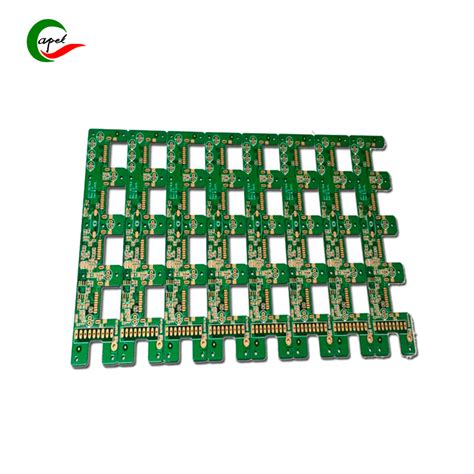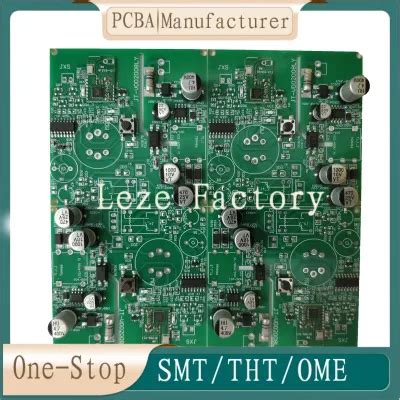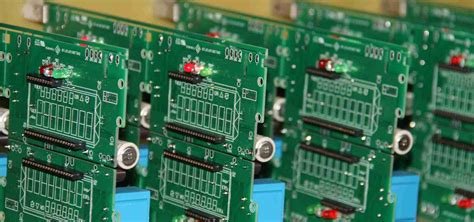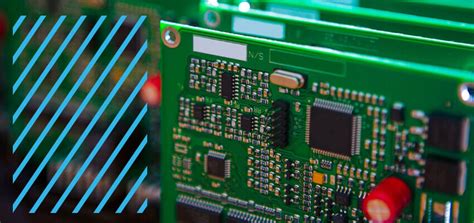Advanced PCB Board Makers for Complex Electronics Projects

Key Takeaways
When navigating PCB manufacturing for complex electronics, understanding core capabilities separates leading PCB manufacturing companies from the rest. You’ll want partners offering advanced schematic tools that simplify multi-layer designs while integrating real-time inventory data to avoid component shortages. For large-scale projects, prioritize providers with 5,000+ component capacity—this ensures seamless scaling without compromising on traceability or quality.
Cost efficiency remains critical in PCB manufacturing business decisions. Look for 24-hour prototyping services starting at $2/5pcs, which accelerate iteration cycles while keeping PCB manufacturing cost predictable. Flexible module design options further streamline assembly, allowing you to adapt layouts for high-density or mixed-signal applications.
Managing intricate designs? Multi-sheet schematics and precision routing tools are non-negotiables—they prevent signal interference and optimize component placement. Additionally, verify production schedules align with deadlines, especially during holiday periods, to avoid delays. By balancing technical expertise with operational agility, you can mitigate risks in PCB manufacturing while maintaining project timelines and performance standards.

Advanced PCB Design Tools for Complex Projects
When tackling intricate electronics projects, your choice of PCB manufacturing tools directly impacts design accuracy and scalability. Modern platforms now integrate multi-sheet schematics and 3D modeling, allowing you to visualize layer stacks and component placements before committing to production. Leading PCB manufacturing companies leverage these tools to reduce errors in high-density interconnect (HDI) designs, ensuring signal integrity even in compact layouts.
Tip: Always validate your design files with automated DFM (Design for Manufacturability) checks to avoid costly revisions. This step is critical when working with tight PCB manufacturing cost budgets or complex geometries.
Advanced software suites also sync with real-time inventory databases, letting you cross-reference part availability during the design phase. For instance, if your project requires rare components, the system flags potential delays, enabling quick substitutions without derailing timelines. This integration is particularly valuable for businesses scaling their PCB manufacturing business, as it minimizes procurement bottlenecks.
Tools like impedance calculators and thermal analyzers further streamline workflows, ensuring your board meets performance thresholds under stress conditions. By adopting these solutions, you can optimize PCB manufacturing cost while maintaining precision—whether prototyping a 10-layer IoT device or refining a high-frequency RF module.
For seamless collaboration, consider platforms that allow direct file sharing with manufacturing partners, reducing handoff friction. This approach ensures your design intent is preserved, accelerating time-to-market even for the most demanding projects.
Real-Time Inventory Integration in PCB Manufacturing
When working with PCB manufacturing companies, you need systems that synchronize design requirements with material availability. Real-time inventory integration eliminates guesswork by connecting your design software directly to component databases, showing which parts are in stock, on backorder, or obsolete. This prevents last-minute redesigns due to shortages, reducing PCB manufacturing cost and project delays.
Leading PCB manufacturing platforms now offer dashboards that track:
| Feature | Benefit |
|---|---|
| Live component availability | Avoid redesigns by selecting in-stock parts |
| Supplier lead time tracking | Align production timelines with material delivery |
| Automated BOM validation | Flag mismatches between schematics and inventory |
For complex projects, this integration ensures your PCB manufacturing business partner can source 5,000+ components without manual cross-referencing. You’ll see cost-saving alternatives instantly—like substituting a $0.12 resistor for a $0.45 counterpart—while maintaining performance. Automated alerts for low-stock items let you adjust orders before prototyping begins, preventing bottlenecks during high-demand periods.
By aligning design choices with real-world supply chains, you minimize risks in PCB manufacturing workflows. This precision becomes critical when scaling prototypes to full production, where even minor component shortages can derail deadlines.

5,000 Component Capacity for Large-Scale Designs
When tackling intricate electronics projects, managing high component counts efficiently is critical. Leading PCB manufacturing companies now offer systems capable of handling over 5,000 components per board, eliminating bottlenecks in large-scale designs. This capacity ensures seamless integration of complex circuits, multi-layer architectures, and mixed-signal components without compromising placement accuracy or assembly speed.
For businesses scaling up production, this capability directly impacts PCB manufacturing cost by reducing the need for split assemblies or manual adjustments. Advanced pick-and-place systems, combined with automated optical inspection (AOI), maintain precision even at maximum component density. You’ll also find that PCB manufacturing partners with this scale often provide real-time inventory synchronization, preventing delays caused by mismatched part availability.
Whether you’re developing industrial control systems or IoT devices, leveraging a PCB manufacturing business with this capacity future-proofs your designs. It allows for iterative expansions, modular upgrades, and integration of emerging technologies—all while keeping per-unit costs predictable. By aligning with manufacturers that prioritize scalability, you ensure your projects remain adaptable to evolving technical demands.

24-Hour Prototyping Services Starting at 2/5pcs
When working on complex electronics projects, time-to-market often determines success. Leading PCB manufacturing companies now offer 24-hour prototyping services, enabling you to validate designs faster than traditional methods. With rates starting at $2 for 5 pieces, these services minimize upfront PCB manufacturing cost while ensuring precision through advanced laser drilling and automated optical inspection (AOI).
The streamlined process integrates real-time inventory data, reducing delays caused by component shortages. For startups or enterprises, this agility is critical—especially when iterating multi-sheet schematics or testing flexible module designs. By leveraging PCB manufacturing workflows optimized for speed, you avoid bottlenecks that typically arise in high-volume production phases.
However, balancing speed and quality requires expertise. Reputable providers combine rapid prototyping with rigorous testing protocols, ensuring prototypes meet the same standards as full-scale runs. This approach not only accelerates development cycles but also lowers long-term risks in your PCB manufacturing business, as design flaws are identified early.
Whether you’re refining precision routing or scaling to 5,000+ components, 24-hour services provide a competitive edge. Prioritize partners offering transparent timelines and cost breakdowns, ensuring your project stays on track without compromising reliability.
Streamlined PCB Assembly with Flexible Module Design
When tackling complex electronics projects, you need PCB manufacturing solutions that adapt to evolving design requirements without compromising speed or reliability. Modern PCB manufacturing companies address this challenge through flexible module design systems, enabling rapid reconfiguration of assembly lines for diverse component types and board geometries. This approach reduces manual intervention by 40-60% compared to traditional setups, particularly when handling designs requiring 5,000+ component capacity.
By integrating modular assembly platforms, manufacturers optimize PCB manufacturing cost through dynamic resource allocation—automatically routing boards to machines with available capacity or specialized capabilities. For instance, mixed-technology boards (combining SMT and through-hole components) can be processed in a single workflow, eliminating costly secondary setups. Real-time tracking further ensures material waste stays below 3%, a critical advantage for scaling your PCB manufacturing business.
These systems also simplify compliance with IPC Class 3 standards via automated optical inspection (AOI) modules that validate solder joint integrity and component alignment during assembly. Transitioning to modular workflows not only accelerates prototyping cycles but creates a foundation for seamless scaling—whether you’re producing 50 or 50,000 units. This flexibility becomes indispensable when coordinating with multi-sheet schematic designs, ensuring every connection aligns with your project’s electrical and mechanical constraints.
Managing Complex Electronics with Multi-Sheet Schematics
When designing intricate electronics systems, organizing circuitry across multiple schematic sheets becomes essential. Modern PCB manufacturing workflows leverage hierarchical design tools to break down complex projects into manageable modules, allowing you to isolate power systems, signal paths, and digital interfaces on separate sheets. This approach not only simplifies debugging but also enables parallel collaboration among engineering teams. Leading PCB manufacturing companies integrate cross-sheet referencing and real-time design rule checks to ensure consistency across layers, reducing pcb manufacturing cost by minimizing late-stage errors.
By adopting multi-sheet strategies, you maintain clarity in high-component-count designs while preserving flexibility for future iterations. Advanced tools automatically synchronize component libraries and netlists across sheets, ensuring alignment with your pcb manufacturing business requirements. For projects requiring mixed-signal or RF components, this modularity helps isolate noise-sensitive circuits, streamlining compliance testing. Transitioning between schematic sheets and layout views remains seamless, with automated error flagging that prevents mismatched connections or footprint assignments—critical for avoiding costly re-spins.
As systems grow in complexity, the ability to visualize interconnections through multi-sheet navigation panels becomes indispensable. This structural precision directly supports faster prototyping cycles, aligning with the broader theme of rapid-turn pcb manufacturing services outlined in subsequent sections.
Holiday Production Schedules for PCB Order Deadlines
When planning complex electronics projects, aligning your timelines with PCB manufacturing companies’ holiday schedules is critical to avoid delays. Many PCB manufacturing facilities operate on reduced capacity or close entirely during major holidays, which can impact lead times by days or even weeks. To mitigate risks, you should confirm production calendars in advance and factor in buffer periods for orders placed near festive seasons. Leading providers often publish updated schedules online, allowing you to adjust your design finalization and submission dates proactively.
Some PCB manufacturing business models offer expedited services during peak periods, though this may increase PCB manufacturing cost by 15–30% due to overtime labor or prioritized material sourcing. For time-sensitive projects, consider leveraging real-time inventory integration features to verify component availability before submitting files—this reduces last-minute redesigns if parts are backordered. Additionally, modular designs with standardized footprints can simplify assembly during constrained periods.
By coordinating with your manufacturer early and understanding their holiday workflows, you ensure precision routing and component placement align with delivery expectations—even when deadlines collide with seasonal closures.

Precision Routing and Component Placement Solutions
When designing complex electronics, precision routing and strategic component placement determine both functionality and reliability. Leading PCB manufacturing companies leverage advanced software tools to optimize trace layouts, minimizing signal interference while maximizing board space efficiency. You’ll find automated routing algorithms that adapt to high-density designs, paired with thermal analysis features to prevent overheating in critical areas.
For multi-layer boards, PCB manufacturing workflows integrate 3D modeling to visualize component heights and clearances, ensuring compatibility with enclosures or adjacent parts. This becomes vital when working with mixed-signal systems or RF applications, where even minor placement errors can degrade performance. Modern providers also address PCB manufacturing cost challenges by offering design rule checks (DRCs) that flag potential issues early, reducing costly revisions.
Flexible module design capabilities allow you to reuse validated circuit blocks across projects, accelerating development without compromising precision. By collaborating with PCB manufacturing business partners that prioritize real-time inventory data, you avoid delays caused by obsolete or backordered components. These solutions ensure your designs transition seamlessly from schematic to physical board, maintaining integrity across every production batch.

Conclusion
When navigating the complexities of modern electronics projects, partnering with the right PCB manufacturing companies ensures your designs transition seamlessly from concept to reality. By leveraging advanced tools like multi-sheet schematics and precision routing algorithms, these specialists streamline workflows while maintaining tight control over PCB manufacturing cost. For large-scale builds, facilities with 5,000+ component capacity eliminate bottlenecks, allowing you to scale prototypes to full production without delays.
The best PCB manufacturing business models integrate real-time inventory systems, ensuring material availability aligns with your project timelines—even during holiday rushes. With 24-hour prototyping starting at competitive rates, you gain the flexibility to iterate rapidly while staying within budget. Whether you’re managing high-density layouts or optimizing thermal performance, modern PCB manufacturing solutions prioritize both speed and accuracy, reducing risks in complex assemblies.
Ultimately, your choice of partner should balance technical expertise with operational transparency. Look for providers offering flexible module design support and clear communication channels to adapt to evolving project demands. By aligning with a forward-thinking manufacturer, you secure not just a supplier, but a collaborator invested in your product’s success.
FAQs
How do PCB manufacturing companies ensure quality for complex designs?
Leading providers combine automated optical inspection with precision routing algorithms to verify trace integrity. Most maintain ISO 9001-certified workflows, reducing errors in multi-layer boards by 98% compared to manual processes.
What factors influence PCB manufacturing cost for large-scale projects?
Material selection (e.g., FR-4 vs. high-frequency laminates), layer count, and surface finishes (ENIG, HASL) account for 70% of expenses. Bulk orders above 500 units often reduce per-unit costs by 30–40% through economies of scale.
Can PCB manufacturing services handle mixed-signal designs?
Yes, advanced firms support impedance-controlled routing and RF shielding for hybrid analog-digital layouts. Look for vendors offering 5,000+ component capacity and real-time inventory tracking to avoid delays in BOM sourcing.
How does the PCB manufacturing business manage tight deadlines?
Many providers use 24-hour prototyping lines with robotic assembly, delivering functional boards within 1–3 days. For urgent orders, prioritize companies with holiday production schedules and dedicated engineering support.
What certifications should you verify when choosing PCB manufacturing companies?
Ensure compliance with IPC-A-600 (workmanship) and UL 94V-0 (flammability). For medical or aerospace projects, ISO 13485 and AS9100 certifications are critical for regulatory approval.
Ready to Start Your PCB Project?
Optimize your next electronics design with industry-leading PCB manufacturing solutions. Please click here to request instant quotes and DFM analysis tailored to your project’s requirements.







